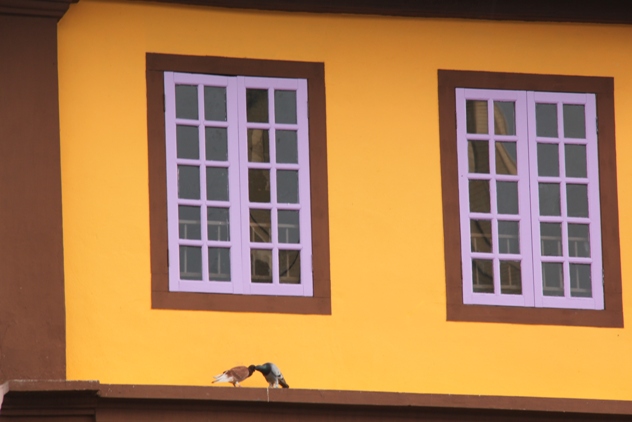I was walking around Main Bazaar yesterday looking for photography targets when I saw this couple acting lovey-dovey. They were kissing passionately oblivious to others watching them.
The male, seeing the receptive response from the female, started to mount her doggy style. And soon, they were passionately making love. Their copulation only lasted a few seconds but it was fast and furious with the male almost losing his balance.
I managed to shoot the action with my camera so you guys are in luck. Scroll down to see the fast & furious action.
Scroll down some more.
A bit further down.
You are almost there.
Yes, you are there.
What were you thinking of? I was talking about a pair of pigeons. Tsk! Tsk! Tsk!
By the way, do you know that the males of most bird species do not have penises . Both male and female birds have an opening called a “cloaca” thus giving rise to the phrase “cloacal kiss” to describe bird sex.
During the breeding season, the ovaries of the female expand dramatically, as do the male’s internal testes. Birds keep their testes inside and that’s why you don’t see a bird with balls. This presumably makes flying much easier.
Bird copulation only lasts a few seconds, enough time to allow the cloacas of the male and female to touch in this so-called cloacal kiss. The male typically mounts the female from behind, depositing sperm from his cloaca into the female’s. The sperm then may or may not fertilise the female’s egg, which she has produced in her one functioning ovary. In most female birds, only the left ovary develops into a functioning organ. This is probably an adaptation to the need to be as light as possible in order to fly effectively. The egg develops a hard shell, is laid by the female and then incubated until the new chick hatches.
 CY@CY Says Welcome to my dreamscape. Where a Lim is also a Ling.
CY@CY Says Welcome to my dreamscape. Where a Lim is also a Ling.










